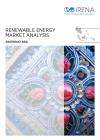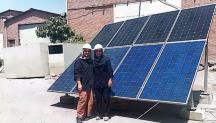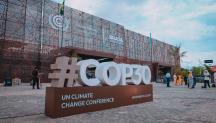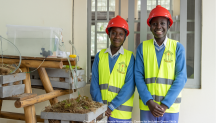

-
-
IRENA (2018), ‘Renewable Energy Market Analysis: Southeast Asia’. IRENA, Abu Dhabi.
Copied
/-/media/Files/IRENA/Agency/Publication/2018/Jan/IRENA_Market_Southeast_Asia_2018.pdf
Copied
Renewable Energy Market Analysis: Southeast Asia
Newsletter
Energy consumption in Southeast Asia has doubled in just over two decades. With annual economic growth exceeding 4%, the region can expect energy demand to rise further in the years ahead. This regional market analysis from the International Renewable Energy Agency (IRENA) examines the challenges of economic and population growth, the need to boost energy supply, and growing environmental and energy security concerns.
Tailored delivery models involving the public, private sector and communities are driving off-grid renewable energy solutions in Southeast Asia delivering a range of socio-economic benefits. Some insights into the diversity of these benefits are captured in six case studies, together with a summary of key findings that have emerged from these insights.
Download the Executive Summary.
Among the findings:
- Energy underpins future growth and supports the region’s progress toward key development goals. Chapter 1 describes macroeconomic and social trends, examining the relationship between economic growth and energy demand.
- The region relies heavily on fossil fuels, both for power generation and transportation. Yet some 65 million people in the region (as of 2017-2018) lack adequate or reliable electricity access. Chapter 2 analyses the regional energy landscape as countries strive to diversify with more renewables.
- Southeast Asia’s rich renewable energy potential remains largely untapped. Chapter 3 analyses the latest cost and deployment trends as well as economic and job benefits offered by renewables.
- The 10-member Association of Southeast Asian Nations (ASEAN) has agreed on a 23% target for sustainable, modern renewables by 2025. Chapter 4 highlights regional and national targets and examines the policy and institutional frameworks for scaling up renewables across the region.
- Between 2006 and 2016, cumulative investment in renewable energy in Southeast Asia amounted to USD 27 billion. Chapter 5 analyses the latest investment trends, the evolution of the capital mix, and measures to address remaining finance barriers.
- Southeast Asia offers compelling examples of the synergies between renewable energy and socio-economic development, whether in rural, urban or island settings. Chapter 6 highlights the wide-ranging benefits of decentralised renewable energy solutions, particularly as the region strives to meet United Nations Sustainable Development Goals.
IRENA’s Renewable Energy Market Analysis series captures knowledge and experience from different regions and identifies emerging public policy and market development trends. The first two editions covered the GCC (Gulf Co-operation Council) region (2015) and Latin America (2016).




